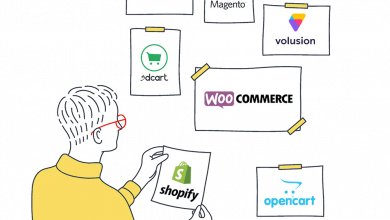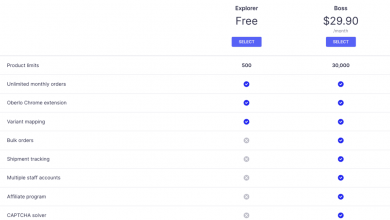Planning for eCommerce Transformation: A Simple ‘5 Pillars’ Approach to Eliminate Risk and Increase Chances of Success
Too often companies jump right into big ecommerce changes without much planning, or seeing a big change to the exclusion of other activities in the business altogether.
For example, switching from one email marketing platform to another, a business can simply sign the contract, and rely on the vendor to help them switch.
That presentation can Working, however, creates a large amount of risk that can easily be avoided.
This post covers a lot Simple ways to avoid accidents: The ‘5 pillars’ framework allows you to go through the change, look at the implications, plan the change systematically, avoid many risks and increase the positive results.
The ‘5 pillars’ approach to ecommerce change
The easiest way to de-risk any big change is to approach it by looking at the following 5 pillars.

When looking at eCommerce transformation, most people immediately think of ‘software’ or ‘data’. In general, moving from right to left, it is better to look at the poles mentioned above.
Let’s take the example of redesigning an email marketing platform, and we’ll work through each of the different pillars. We will start From right to left:
1. People
- How will the new email marketing platform affect our current email recipients?
- What impact does it have on people who aggregate our emails or provide information to people by approving our emails?
- How will it affect the people who receive the emails? (For example, do they have to opt-in again? Do emails go to spam unless we take some extra action?)
- How does it affect the relationship with the supplier? (Does our current email marketing platform provider provide us with any other services? Are there regular meetings or updates from their sales teams?)
2. Procedures
- How do we put our emails together these days?
- How do we handle unsubscribing? Or unusual complaints?
- How will they be justified and does that fit into the new system?
- How is reporting currently done, and what actions occur if numbers are up or down?
3. Data
- What happens to our historical data when we switch platforms?
- To which databases does our email platform send information?
- What other data sources are currently sending data to the email platform?
- How can we better integrate data to gain a competitive advantage, and does this system change give us the ability to do just that?
- What are the risks of our data falling out of sync or being corrupted?
4. Software
- Is the new platform actively being developed?
- What happens when there are updates? Should we make changes to respond to them? What can we do if they don’t suit our needs?
- Is there a possibility that the software is out of date? Or will a competitor buy it and move us to another system? How does that affect our contractual aspirations?
- Does the software integrate seamlessly with other software? If not, can we build integrations ourselves?
5. Hardware
Hardware considerations are different from a few years ago, when most software changes required companies to install new hardware directly. Instead, most software today is cloud-based, but this presents its own issues.
- What is the hardware configuration of this new provider?
- If performance is a problem, what are our options?
- What are the cybersecurity implications of platform hardware configuration? Who is responsible if something goes wrong? How will we be notified?
- Are our own systems powerful enough to run interfaces for the new platform?
- Should we increase our security measures based on what the new platform allows us to do?
Summary
We’ve covered just one example above: email marketing platform conversions. You can see how much risk this removes and how much added value can be created by ‘fixing’ things in each area from the simple questions we asked each area. You can also see: This should not take months. With the above approach, most questions can be answered quickly, but, in doing so, you expose the entire process to a great extent.
From this example, you can see the importance of breaking down change from a top-line to a ‘5 Pillars’ approach, so you can do the process yourself, eliminate risk and maximize the chance of success for your organization. When it comes to any eCommerce conversion.



